--- Title: "How to Memorize Things Fast: 8 Best Memorization Techniques [Step-by-step Guide]" author: Xuan Pang tags: Content slug: how-to-memorize-things-fast-8-best-memorization-techniques-step-by-step-guide description: Learn the step-by-step process of mastering 8 top memorization techniques for improved memory retention. Enhance your learning and memory skills with these proven methods. created: 2024-10-08 updated: 2025-04-12 layout: blog publish: true --- <img src="https://app.affine.pro/api/workspaces/qf73AF6vzWphbTJdN7KiX/blobs/a0TKbLywUMbtLI3fHHlEYtFK-TtEY-Z4jcB6EE_GI6Q=.webp" width="2400" height="1260" crossorigin="anonymous" /> Do you notice a progressive loss in your remembering abilities? Do you find it difficult to recall a lot of information? Are you wanting to improve your remembering skills? You have arrived to the correct location! Take a deep dive into this blog article to learn more about how these top 8 memorizing strategies may help you and the precise tools you can use to improve your memory. How does memorization work? 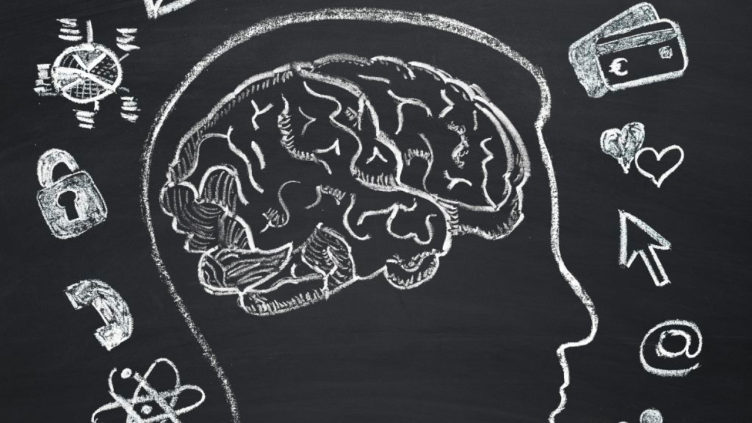 Memorization is a two-phase process: encoding and retrieval. During the encoding phase, new information is turned into long-term memories by a variety of cognitive techniques such as elaboration, association, and visualization. These stored memories are then recovered using brain connections. According to studies, certain memorizing strategies outperform others in terms of long-term knowledge retention. Techniques like spaced repetition and elaborative encoding have shown promise in improving long-term memory. In contrast, approaches such as chunking and mnemonics help with short-term remember by simplifying the content. ### How to Memorize Anything in a 4-Step Approach If you've ever thought, "I'm not good at memorizing," know that your brain is trainable. The memorizing process is divided into four stages: attention, encoding, storage, and retrieval, each having its unique purpose.  **Attention**: Assume you're in a meeting and a colleague proposes a marketing concept. Sensory receptors provide information to your brain, but it only stays there for a short time as your brain filters and analyzes its significance. Only when you actively engage with the knowledge will it go to the next step. **Encoding**: Your colleague's proposal must have piqued your interest because your brain is currently encoding the information. During this step, it is transferred to either short-term or working memory. Short-term memory keeps information for a few seconds, whereas working memory may maintain it for up to 20 minutes. Useful for activities such as completing arithmetic problems, but not great for remembering your colleague's pitch next Thursday. **Storage**: Moving information from short-term to long-term memory involves intentional effort. Your brain will not make this decision for you; you must memorize it using a manner that works for you (more on that later). **Retrieval**: How you pay attention, encode, and store information affects your capacity to recover it later. The longer the time between storage and retrieval, the more important it is to return and review the knowledge on a frequent basis in order to keep it fresh in your memory. ### Top 8 Memorization Techniques You Can Use Not every memorizing strategy will work for everyone. But there are several methods to try! Check out our list of the top eight memorizing strategies to improve your data recall skills. ### Spaced repetition Use spaced repetition, which includes reviewing knowledge at increasingly longer intervals. This strategy takes use of memory decay, a psychological phenomenon in which memories fade with time. To combat this fading effect, whether in short-term or long-term retention, constant practice recalling or "repeating" what you've recalled is an effective antidote. ### Elaborative encoding Elaborative coding, a mnemonic method, makes remembering easier. Visualizing new material on a whiteboard is an efficient way to relate it to your existing conceptual framework. Tools such as [AFFiNE Whiteboards](https://affine.pro/whiteboard) offer a structured platform for integrating activities and using brainstorming approaches. You may easily design and store process diagrams, which you can then use as a fast reference when you need to refresh your memory. This visual aid increases your understanding of the content by connecting it with your existing knowledge base. ### Chunking Break down large amounts of material into smaller, more consumable chunks. This method reduces memory, making it less intimidating and allowing for faster mastery of specific components. According to research, chunking reduces the stress on working memory when dealing with large volumes of data. By breaking down the knowledge into digestible chunks, you may progressively build a larger dataset that is not only simpler to recall but also promotes a cohesive comprehension of the content. To achieve this, [AFFiNE](https://affine.pro/) offers the Blockslicer tool for you to break your information into smaller pieces. ### Top 8 Memorization Techniques You Can Use Not every memorizing strategy will work for everyone. But there are several methods to try! Check out our list of the top eight memorizing strategies to improve your data recall skills. ### Spaced repetition Use spaced repetition, which includes reviewing knowledge at increasingly longer intervals. This strategy takes use of memory decay, a psychological phenomenon in which memories fade with time. To combat this fading effect, whether in short-term or long-term retention, constant practice recalling or "repeating" what you've recalled is an effective antidote. ### Elaborative encoding Elaborative coding, a mnemonic method, makes remembering easier. Visualizing new material on a whiteboard is an efficient way to relate it to your existing conceptual framework. Tools such as [AFFiNE Whiteboards](https://affine.pro/whiteboard) offer a structured platform for integrating activities and using brainstorming approaches. You may easily design and store process diagrams, which you can then use as a fast reference when you need to refresh your memory. This visual aid increases your understanding of the content by connecting it with your existing knowledge base. ### Chunking Break down large amounts of material into smaller, more consumable chunks. This method reduces memory, making it less intimidating and allowing for faster mastery of specific components. According to research, chunking reduces the stress on working memory when dealing with large volumes of data. By breaking down the knowledge into digestible chunks, you may progressively build a larger dataset that is not only simpler to recall but also promotes a cohesive comprehension of the content. To achieve this, [AFFiNE](https://affine.pro/) offers the Blockslicer tool for you to break your information into smaller pieces. 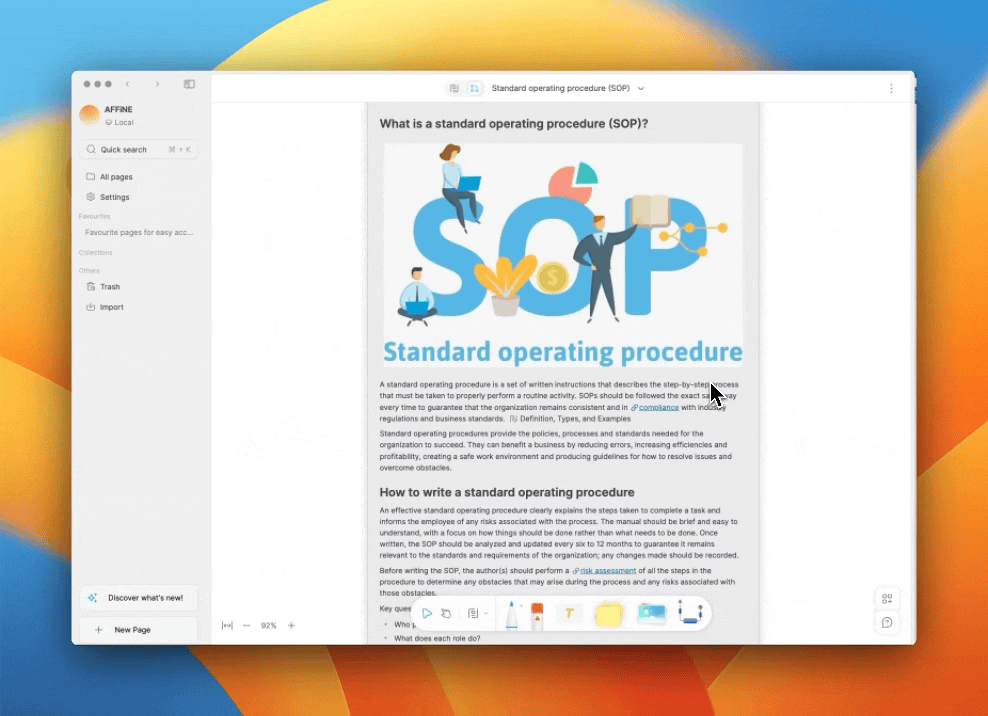 ### Mnemonics Mnemonics are methods of memorizing information that include rhymes, acronyms, or vivid mental imagery. This strategy gives a pleasant aspect to memory. According to research, repeated usage of spelling mnemonics may reorganize your brain networks, resulting in better memory recall. Singing your ABCs to music is a simple example of how to remember them better. Perhaps your art teacher introduced you to "Roy G. Biv" as a mnemonic aid for learning the rainbow colors in the proper order: red, orange, yellow, green, blue, indigo, and violet. Mnemonics breathe fresh life into memory, making the learning process more engaging and effective. ### Active recall Frequent self-testing of the content you've learned is an effective memory-enhancing activity. The more you do this exercise, the easier it gets to recall both recent and older material. As a student, active recall is an effective study approach. Active recall is the process of persuading your brain to recover desired knowledge without the need of external reminders or signals. This strategy is an efficient way to improve memory recall and deepen your comprehension of the content. ### Visualization As previously noted, using pictures is another effective strategy for memorizing. When you construct mental images of the content and connect them to visual representations, you dramatically improve your capacity to recall knowledge. Using software solutions such as AFFiNE Mind Maps simplifies the visual part of this procedure. AFFiNE Mind Maps allows you to quickly translate your plans, ideas, and procedures into appealing visual representations. This allows you to connect your visualizations and add context to help in the memorizing process, resulting in vivid representations of the topics you want to remember. ### Association Organizing comparable material with relevant topics improves memory. Grouping material that has similarities, especially when no exact sequential order is necessary, makes memorizing easier. This method is especially useful when working with numbers or phrases that have the same first letter. Our brains automatically absorb the initial letter and help us make associations with the material we're attempting to recall. ### Recitation Repeating what you're learning aloud, even while you're alone, is a popular way of memory reinforcement. The human brain thrives on this activity! Furthermore, if you can practice this strategy with a study partner, it would be really advantageous. Recitation helps memorize information in the right order, similar to learning lyrics to a new song by listening and singing. 🎶 You could even find yourself recalling a catchy tune from a commercial right now, demonstrating the power of repetition and recitation. ### The Best Memorization Tool to Improve Your Thoughts 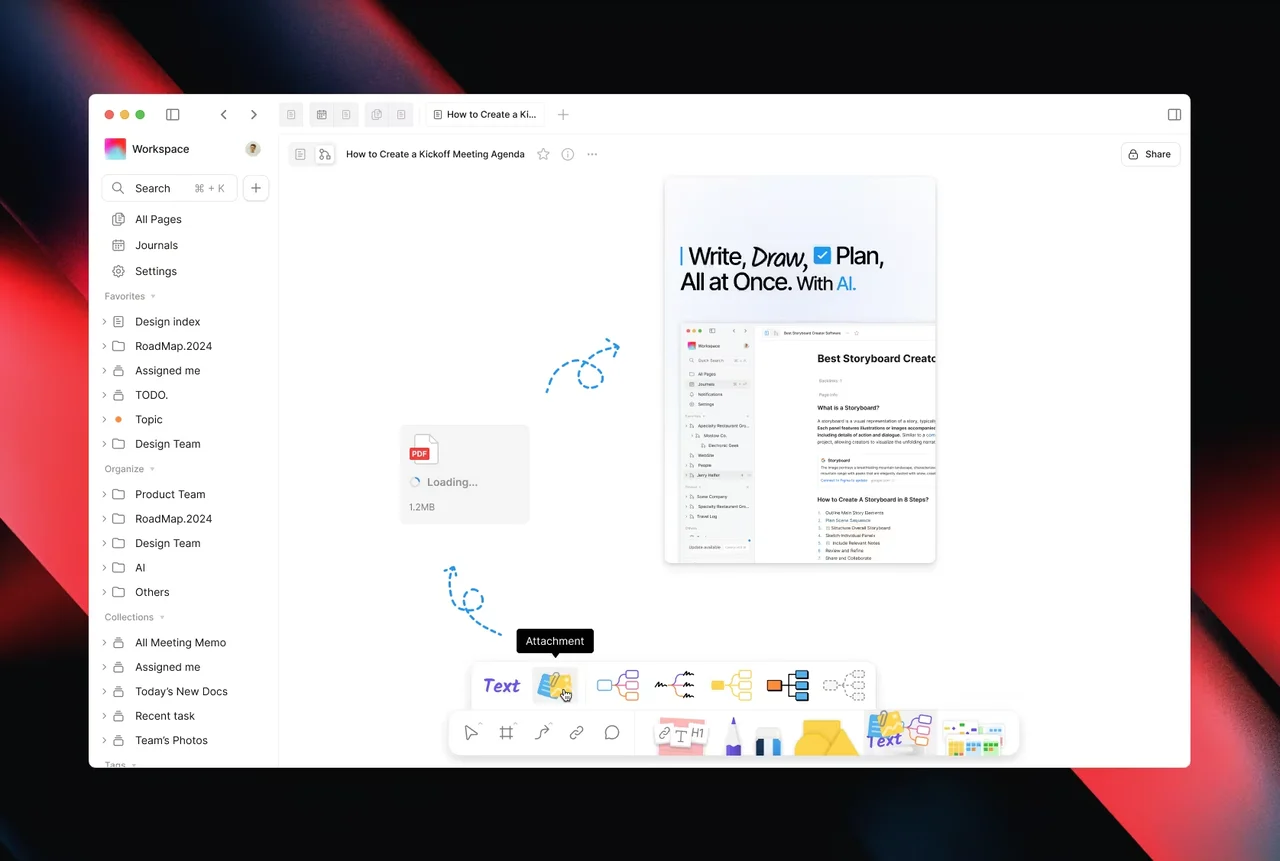 AFFiNE is an all-in-one program that offers a wide range of features such as mind mapping, whiteboard capabilities, and [Kanban boards](https://affine.pro/blog/free-kanban-board-templates-examples-boost-work-efficiency). This adaptable tool is intended to aid with effective remembering and cognitive development by providing a variety of features that assist your thinking processes. Whether you're organizing thoughts, visualizing concepts, or structuring information, AFFiNE helps you optimize your mental processes and improve memory retention. #### Here are some of the brilliant features that AFFiNE offers: * Simplified Flowcharts and Mind Maps - Lighten Your Workload With a single click, this feature allows shapes to automatically extend from one another, saving you time and energy and making the process more convenient. 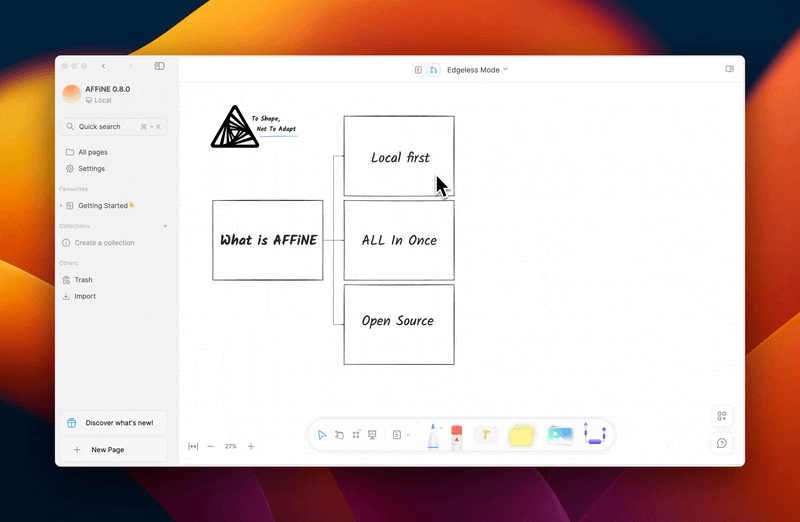 * Tailor Your Workflow - Explore a Spectrum of Options To elevate your flowchart experience, AFFiNE offers shape customization options, including colors and styles. Click to create a new shape, and watch it harmonize seamlessly with the previous one, giving you a cohesive toolkit to play with. * Tags - Enhance Content Organization and Discoverability Too many pages? By AFFiNE, you can tag your content with descriptive labels, making it easier to find and access whenever you need it. 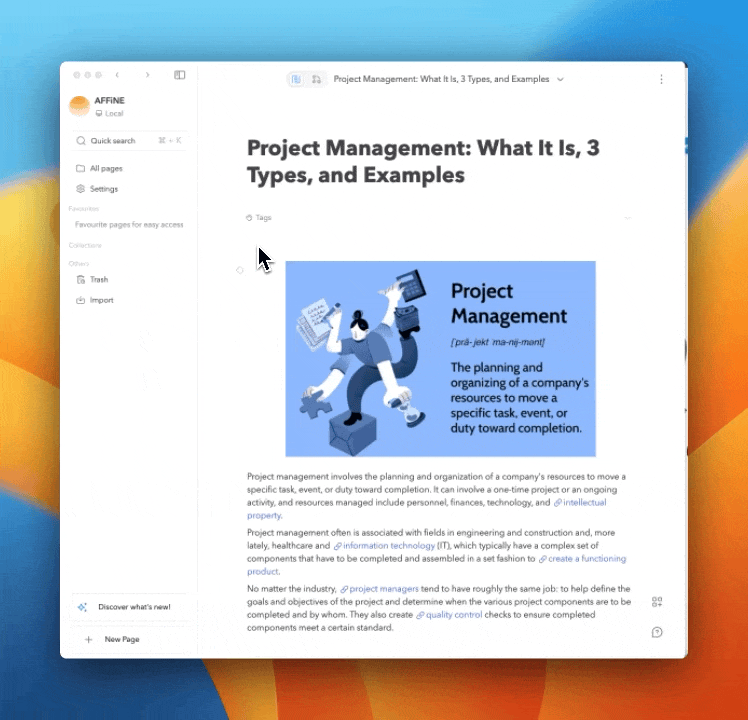 Currently, AFFiNE has released its stable version, but we are continuing to build to a more feature-rich and stable build. Come and join us on our journey over on our media platforms. |Column 1|Title| |---|---|
Title: "How to Memorize Things Fast: 8 Best Memorization Techniques [Step-by-step Guide]"
author: Xuan Pang
tags: Content
slug: how-to-memorize-things-fast-8-best-memorization-techniques-step-by-step-guide
description: Learn the step-by-step process of mastering 8 top memorization techniques for improved memory retention. Enhance your learning and memory skills with these proven methods.
created: 2024-10-08
updated: 2025-04-12
layout: blog
publish: true
Do you notice a progressive loss in your remembering abilities? Do you find it difficult to recall a lot of information? Are you wanting to improve your remembering skills? You have arrived to the correct location! Take a deep dive into this blog article to learn more about how these top 8 memorizing strategies may help you and the precise tools you can use to improve your memory. How does memorization work?

Memorization is a two-phase process: encoding and retrieval. During the encoding phase, new information is turned into long-term memories by a variety of cognitive techniques such as elaboration, association, and visualization. These stored memories are then recovered using brain connections.
According to studies, certain memorizing strategies outperform others in terms of long-term knowledge retention. Techniques like spaced repetition and elaborative encoding have shown promise in improving long-term memory. In contrast, approaches such as chunking and mnemonics help with short-term remember by simplifying the content.
How to Memorize Anything in a 4-Step Approach
If you've ever thought, "I'm not good at memorizing," know that your brain is trainable. The memorizing process is divided into four stages: attention, encoding, storage, and retrieval, each having its unique purpose.

Attention: Assume you're in a meeting and a colleague proposes a marketing concept. Sensory receptors provide information to your brain, but it only stays there for a short time as your brain filters and analyzes its significance. Only when you actively engage with the knowledge will it go to the next step.
Encoding: Your colleague's proposal must have piqued your interest because your brain is currently encoding the information. During this step, it is transferred to either short-term or working memory. Short-term memory keeps information for a few seconds, whereas working memory may maintain it for up to 20 minutes. Useful for activities such as completing arithmetic problems, but not great for remembering your colleague's pitch next Thursday.
Storage: Moving information from short-term to long-term memory involves intentional effort. Your brain will not make this decision for you; you must memorize it using a manner that works for you (more on that later).
Retrieval: How you pay attention, encode, and store information affects your capacity to recover it later. The longer the time between storage and retrieval, the more important it is to return and review the knowledge on a frequent basis in order to keep it fresh in your memory.
Top 8 Memorization Techniques You Can Use
Not every memorizing strategy will work for everyone. But there are several methods to try! Check out our list of the top eight memorizing strategies to improve your data recall skills.
Spaced repetition
Use spaced repetition, which includes reviewing knowledge at increasingly longer intervals. This strategy takes use of memory decay, a psychological phenomenon in which memories fade with time.
To combat this fading effect, whether in short-term or long-term retention, constant practice recalling or "repeating" what you've recalled is an effective antidote.
Elaborative encoding
Elaborative coding, a mnemonic method, makes remembering easier. Visualizing new material on a whiteboard is an efficient way to relate it to your existing conceptual framework.
Tools such as AFFiNE Whiteboards offer a structured platform for integrating activities and using brainstorming approaches. You may easily design and store process diagrams, which you can then use as a fast reference when you need to refresh your memory. This visual aid increases your understanding of the content by connecting it with your existing knowledge base.
Chunking
Break down large amounts of material into smaller, more consumable chunks. This method reduces memory, making it less intimidating and allowing for faster mastery of specific components.
According to research, chunking reduces the stress on working memory when dealing with large volumes of data. By breaking down the knowledge into digestible chunks, you may progressively build a larger dataset that is not only simpler to recall but also promotes a cohesive comprehension of the content. To achieve this, AFFiNE offers the Blockslicer tool for you to break your information into smaller pieces.
Top 8 Memorization Techniques You Can Use
Not every memorizing strategy will work for everyone. But there are several methods to try! Check out our list of the top eight memorizing strategies to improve your data recall skills.
Spaced repetition
Use spaced repetition, which includes reviewing knowledge at increasingly longer intervals. This strategy takes use of memory decay, a psychological phenomenon in which memories fade with time.
To combat this fading effect, whether in short-term or long-term retention, constant practice recalling or "repeating" what you've recalled is an effective antidote.
Elaborative encoding
Elaborative coding, a mnemonic method, makes remembering easier. Visualizing new material on a whiteboard is an efficient way to relate it to your existing conceptual framework.
Tools such as AFFiNE Whiteboards offer a structured platform for integrating activities and using brainstorming approaches. You may easily design and store process diagrams, which you can then use as a fast reference when you need to refresh your memory. This visual aid increases your understanding of the content by connecting it with your existing knowledge base.
Chunking
Break down large amounts of material into smaller, more consumable chunks. This method reduces memory, making it less intimidating and allowing for faster mastery of specific components.
According to research, chunking reduces the stress on working memory when dealing with large volumes of data. By breaking down the knowledge into digestible chunks, you may progressively build a larger dataset that is not only simpler to recall but also promotes a cohesive comprehension of the content. To achieve this, AFFiNE offers the Blockslicer tool for you to break your information into smaller pieces.

Mnemonics
Mnemonics are methods of memorizing information that include rhymes, acronyms, or vivid mental imagery. This strategy gives a pleasant aspect to memory. According to research, repeated usage of spelling mnemonics may reorganize your brain networks, resulting in better memory recall.
Singing your ABCs to music is a simple example of how to remember them better. Perhaps your art teacher introduced you to "Roy G. Biv" as a mnemonic aid for learning the rainbow colors in the proper order: red, orange, yellow, green, blue, indigo, and violet. Mnemonics breathe fresh life into memory, making the learning process more engaging and effective.
Active recall
Frequent self-testing of the content you've learned is an effective memory-enhancing activity. The more you do this exercise, the easier it gets to recall both recent and older material. As a student, active recall is an effective study approach.
Active recall is the process of persuading your brain to recover desired knowledge without the need of external reminders or signals. This strategy is an efficient way to improve memory recall and deepen your comprehension of the content.
Visualization
As previously noted, using pictures is another effective strategy for memorizing. When you construct mental images of the content and connect them to visual representations, you dramatically improve your capacity to recall knowledge.
Using software solutions such as AFFiNE Mind Maps simplifies the visual part of this procedure. AFFiNE Mind Maps allows you to quickly translate your plans, ideas, and procedures into appealing visual representations. This allows you to connect your visualizations and add context to help in the memorizing process, resulting in vivid representations of the topics you want to remember.
Association
Organizing comparable material with relevant topics improves memory. Grouping material that has similarities, especially when no exact sequential order is necessary, makes memorizing easier.
This method is especially useful when working with numbers or phrases that have the same first letter. Our brains automatically absorb the initial letter and help us make associations with the material we're attempting to recall.
Recitation
Repeating what you're learning aloud, even while you're alone, is a popular way of memory reinforcement. The human brain thrives on this activity! Furthermore, if you can practice this strategy with a study partner, it would be really advantageous. Recitation helps memorize information in the right order, similar to learning lyrics to a new song by listening and singing. 🎶 You could even find yourself recalling a catchy tune from a commercial right now, demonstrating the power of repetition and recitation.
The Best Memorization Tool to Improve Your Thoughts

AFFiNE is an all-in-one program that offers a wide range of features such as mind mapping, whiteboard capabilities, and Kanban boards. This adaptable tool is intended to aid with effective remembering and cognitive development by providing a variety of features that assist your thinking processes. Whether you're organizing thoughts, visualizing concepts, or structuring information, AFFiNE helps you optimize your mental processes and improve memory retention.
Here are some of the brilliant features that AFFiNE offers:
- Simplified Flowcharts and Mind Maps - Lighten Your Workload With a single click, this feature allows shapes to automatically extend from one another, saving you time and energy and making the process more convenient.

-
Tailor Your Workflow - Explore a Spectrum of Options To elevate your flowchart experience, AFFiNE offers shape customization options, including colors and styles. Click to create a new shape, and watch it harmonize seamlessly with the previous one, giving you a cohesive toolkit to play with.
-
Tags - Enhance Content Organization and Discoverability Too many pages? By AFFiNE, you can tag your content with descriptive labels, making it easier to find and access whenever you need it.

Currently, AFFiNE has released its stable version, but we are continuing to build to a more feature-rich and stable build. Come and join us on our journey over on our media platforms.
| Column 1 | Title |
|---|